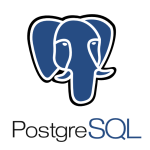What is our primary use case?
For retail, all the backend data, such as merchandise items, is stored in Microsoft Azure Cosmos DB. This data is processed by backend APIs, and the UI can perform displays, printouts, edits, creations, etc.
How has it helped my organization?
Cost-wise, it is transparent. It supports traceability. Any activity happening in your Microsoft Azure Cosmos DB can be seen from the Azure portal via log events. If you have some sort of observability, you can centralize logging and create historical insights or virtualization based on the activity. By default, Microsoft Azure Cosmos DB provides all of that on their main portal.
It is responsive when you have a large dataset stored in your Microsoft Azure Cosmos DB. It is no problem. You can quickly scale it. Unlike traditional solutions, you do not have to deal with a separate team managing the database.
Search results have been good. It is a good experience because you can search results via the Azure portal, via a query, or via CLI. You have plenty of options. Aside from that, you can do quick scaling of your Microsoft Azure Cosmos DB whenever you have an issue with the workload, capacity, etc.
Traditional database solutions require back-and-forth coordination between teams which can lead to delays in implementing simple tasks. With Microsoft Azure Cosmos DB running on the cloud, the developer can do a quick query, and the operator can do technical analysis or troubleshooting. It is beneficial overall in terms of operational effectiveness.
Optimization is achieved through indexes. It is pretty similar to other SQL or database solutions. Microsoft Azure provides Data Studio, where you can explore your schema, tweak it, create a backup, and restore existing data within Microsoft Azure Cosmos DB. These tools make your life easier if you do not like working with the CLI.
What is most valuable?
Microsoft Azure Cosmos DB is a good solution for distributed application requirements. We can perform multi-modeling. For modern applications, I would recommend Microsoft Azure Cosmos DB. It caters to different types of applications and also provides an API base wherein you can perform automated updates for your Microsoft Azure Cosmos DB resources.
It provides all the common features that other database solutions offer. The difference is that Microsoft Azure Cosmos DB is cloud-hosted. You can host it on-prem, but running in the cloud simplifies everything in terms of support and availability.
What needs improvement?
Overall, it works very well and fits the purpose regardless of the target application. However, by default, there is a threshold to accommodate bulk or large requests. You have to monitor the Request Units. If you need more data for a particular query, you need to increase the Request Units.
For how long have I used the solution?
I have only used the technology for three to four months.
What do I think about the stability of the solution?
It depends on how you configure your Microsoft Azure Cosmos DB. If you are using it as a standalone service, you are unlikely to gain the full benefits of having Microsoft Azure Cosmos DB running on the cloud. However, if you consider scale sets and scalability, for example, you can achieve higher stability.
With Microsoft Azure Cosmos DB, we created an availability zone to ensure that there is a replica of the primary Microsoft Azure Cosmos DB instance. If the primary goes down, there is a secondary database that they can use for the application. The backend application gets repointed to the secondary instance.
I do not see any problem with the latency. Connecting from your local client like Azure Data Studio to your Microsoft Azure Cosmos DB can take time, but if you are going to connect an application to the database in the same region, there is no latency at all.
What do I think about the scalability of the solution?
It is highly scalable. I would rate it a nine out of ten for scalability.
We can quickly scale using Terraform. We can perform horizontal and vertical scaling with Terraform and apply it. It will automatically reflect in our Azure environment.
How are customer service and support?
Excellent support always comes from Microsoft. If you have a problem with different services, you just raise a ticket, and someone will reach out to you. I can elevate the severity depending on the criticality of your issues and the impact.
How would you rate customer service and support?
Which solution did I use previously and why did I switch?
We did not use any other solution previously because this is a new project for modernizing the merchandising area.
How was the initial setup?
The setup is easy, especially in the cloud, so I would rate it a nine out of ten for the ease.
All our infrastructure layers are being controlled by Terraform. If we want to set up a new environment, it can be done within a day for not only Microsoft Azure Cosmos DB but also all resources required for an end-to-end application flow.
What about the implementation team?
You can do it yourself. They have good documentation, which is easy to follow.
What was our ROI?
You can get an ROI in a year, provided you deploy it properly with the right baseline forecasted plan in terms of resource sizing. There are many factors when it comes to ROI, such as how quickly you can onboard your application and consume the backend Microsoft Azure Cosmos DB. For those new to the cloud, it might be hard to get the ROI quickly, but those with existing resources in the cloud can achieve their ROI in the short term.
It can save a lot if you perform regular monitoring. If you have a monitoring team for checking the overall utilization of Microsoft Azure Cosmos DB resources, it will save a lot of cost. You can react quickly and trim down the specs, memory, RAM, storage size, etc. It can save about 20% of the costs.
What's my experience with pricing, setup cost, and licensing?
Its cost is transparent. Pricing depends on the transaction and data size, but overall, it is cheaper compared to hosting it on your corporate network due to other factors like power consumption.
Current pricing is fine, and you can scale it afterward. You can start with a small size and scale eventually. That is a benefit of having Microsoft Azure Cosmos DB on the cloud.
Which other solutions did I evaluate?
It was the primary platform choice of the client at the time.
What other advice do I have?
You can quickly learn Microsoft Azure Cosmos DB if you are familiar with how databases work.
Microsoft Azure Cosmos DB offers all you need for a particular database solution. It is better if you can host it in the cloud, applying security controls like data at rest and data in transit. You must ensure Microsoft Azure cloud is only accessible in a secure manner.
Scalability-wise, you can quickly scale your Microsoft Azure Cosmos DB, unlike on-premises, where you must request and procure additional resources. There is no such need; you can use infrastructure as code like Terraform and adjust the resource specs whenever you like. There are no capacity and workload concerns.
I would rate Microsoft Azure Cosmos DB a nine out of ten.
Which deployment model are you using for this solution?
Public Cloud
If public cloud, private cloud, or hybrid cloud, which cloud provider do you use?
Microsoft Azure
Disclosure: My company does not have a business relationship with this vendor other than being a customer.

























Nice review